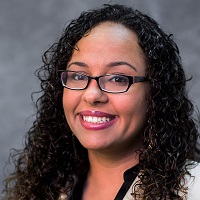
Member Morpheus Lab, 2009–
Aimy came from Egypt to the United States of America in 2002. She lived in Hamilton, New Jersey where she attended high school as a junior. Ever since she was sixteen, Aimy wanted to become an aerospace engineer, hence she attended the Pennsylvania State University and earned her Bachelor of Sciences in Aerospace Engineering in 2008. During her undergraduate studies, Aimy was introduced to research through the McNair Scholars Program. As a part of the program she performed a summer research project under the supervision of Dr. George Lesieutre. The research project focused on Structural Health Monitoring Systems and their applications to Aircraft. The McNair Scholars Program, as well as the great research experience she had as an undergraduate student inspired Aimy to pursue a graduate degree in the field she always loved, Aerospace Engineering. When not researching or taking classes, Aimy enjoys playing Volleyball, swimming, and hanging out with her close friends.
Title: Ornithopter Wing Performance Optimization via Bending Torsional Coupling
If we take time to look towards the sky and observe the way birds fly, we will discover a revolution in the world of aerodynamics and flight mechanics. Birds and insects have high degree of maneuverability and agility. They are able to morph their wings significantly to optimize their flight performance at various flight stages and allow for different mission roles during a single flight (i.e. perching, loitering, landing, and taking off). Most birds will have the wings fully extended during the downstroke to maximize the production of lift, but they adduct their wings during the upstroke to decrease drag penalties. Not only do birds change their wing span during the flapping cycle but they also change the wing’s incidence and angle of attack to maximize the production of thrust mainly during the downstroke.
Passively morphing the wings during flight can achieve such complex profile without suffering any energy penalties. One method for passively morphing the current ornithopter wing is exploiting the bending torsional coupling properties of a material. The objective of this research is to design a suitable stiffness matrix for the ornithopter wing to achieve an appropriate kinematic model wing tip path given the aerodynamic loads that the ornithopter experience during flight by exploiting the bending torsional coupling of the wing material.